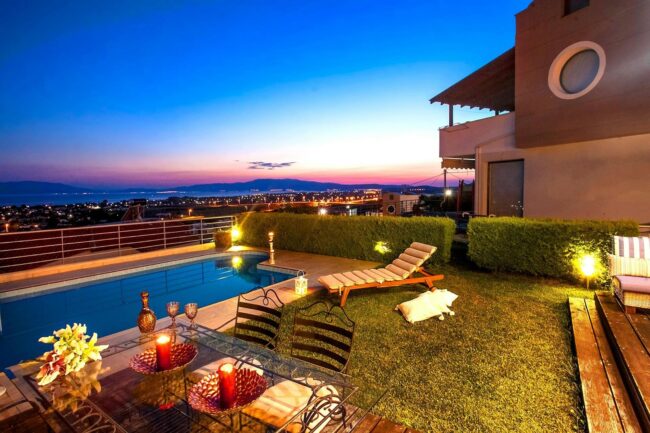
A vacation home isn’t just a second property—it’s an escape, a retreat, and, in many cases, a lifelong dream come true. While some people buy a property purely as an investment for short-term rentals, others envision a personal getaway where they can unwind, recharge, and make memories. But turning a property into the perfect vacation home takes more than just a purchase. It requires thoughtful planning, design, and, often, a bit of renovation to create a space that truly feels like an escape. Whether you’re building from the ground up or transforming an existing home, this guide will walk you through every step of the process to make your dream vacation home a reality.
Budgeting Smartly: Planning for Hidden Costs
Purchasing a property is just the beginning—transforming it into a dream vacation home comes with additional expenses that many overlook. A realistic budget should include renovation costs, furnishing expenses, permits, and potential upgrades to meet personal preferences. Many homes, especially those in remote locations, may require additional work to improve plumbing, electrical systems, or insulation.
Unexpected costs are common. Repairs, contractor fees, and fluctuating material prices can quickly add up. Setting aside a contingency fund of at least 10-20% of the budget will help cover any surprises without derailing the entire project. Working with professionals who understand all the nuances of building a vacation home will also prevent costly mistakes.
Budgeting smartly does not mean cutting corners. Investing in durable materials and high-quality furnishings from the beginning can save money in the long run. A well-planned budget ensures that the home is not only beautiful but also practical and financially sustainable.
Choosing the Right Location: More Than Just a Scenic View
Selecting the right location for your vacation home is the foundation of making it a true getaway. While a stunning view may be the initial draw, there are many other factors to consider before committing to a specific place. Accessibility plays a major role, especially if you plan on visiting frequently. A location that requires multiple connecting flights or long, tedious drives may seem appealing at first but could quickly become inconvenient.
The climate should also be a top consideration. A beach house sounds perfect, but if the region is prone to hurricanes or extreme humidity, maintenance costs can become a burden. Similarly, a cozy mountain retreat is idyllic, but harsh winters could make access challenging.
A dream location is not just about beauty—it is about finding a place that aligns with both lifestyle and long-term plans.
Designing with Purpose: Crafting a Home That Feels Like an Escape
A vacation home should feel different from a primary residence. The design should immediately create a sense of relaxation and escape, whether that means an open-concept layout, large windows framing breathtaking views, or an indoor-outdoor living experience. Unlike a city apartment or suburban home, a vacation property benefits from unique architectural elements that make it feel like a retreat.
The surrounding environment should influence the design. A beachfront home may incorporate natural materials like wood and stone to blend with the scenery, while a mountain cabin might focus on cozy elements like exposed beams and large fireplaces.
Functionality is just as important as aesthetics. Open layouts encourage gathering and socializing, while designated quiet spaces allow for relaxation. Outdoor areas should be an extension of the home, with patios, decks, and lounging spaces designed for maximum enjoyment. A vacation home should feel effortless and inviting, a place where every design choice contributes to comfort and ease.
Working with the Right Professionals: Architects, Designers, and Contractors
Building or renovating a vacation home requires expertise. Hiring professionals who specialize in second homes ensures that the project runs smoothly and meets high standards. An architect with experience in vacation properties will design a home that maximizes natural light, airflow, and scenic views while also considering structural resilience.
Interior designers play a key role in creating a cohesive and inviting space. They help select materials, furniture, and color schemes that reflect the desired atmosphere while ensuring functionality. Contractors and builders should be vetted carefully, with reviews and past work evaluated before making a final decision.
Having the right professionals involved from the start leads to a home that is not only visually stunning but also built to last.
Maximizing Comfort and Functionality: Essential Features to Consider
A vacation home should prioritize comfort without sacrificing functionality. Key features such as spacious living areas, well-designed kitchens, and high-quality bedding can transform a space into a true retreat. Smart home technology, including automated lighting, security systems, and climate control, adds convenience, especially for homeowners who do not live there full-time.
Outdoor features are just as important as interior spaces. A well-designed patio, an outdoor kitchen, or a fire pit extends the usability of the home beyond its walls. Pools, hot tubs, and lounge areas create a resort-like atmosphere, making the home feel like a true escape.
Practicality should also be a priority. Durable materials that can withstand the local climate, easy-to-maintain flooring, and furniture that balances aesthetics with resilience make ownership easier. A vacation home should be a place of enjoyment, not a constant source of upkeep and stress.
Decorating for a Vacation Feel: Interior Design Tips
Unlike a primary residence, where practicality often takes precedence, a vacation home should immediately evoke a sense of relaxation and escape. The color palette should reflect the surrounding environment—soft neutrals and ocean blues for a beach house, warm earth tones for a mountain retreat, or vibrant hues for a tropical getaway. The goal is to create an atmosphere that feels cohesive with the location and instantly transports guests into a different mindset.
Furniture should be both stylish and durable. Since vacation homes often host multiple guests, choosing materials that withstand frequent use is important. Sofas with performance fabrics, easy-to-clean surfaces, and well-placed accent pieces can elevate the space without sacrificing practicality.
Lighting also plays a major role in setting the right ambiance. Large windows that maximize natural light make spaces feel open and airy, while warm, soft lighting creates a relaxed evening atmosphere. Add thoughtful decor choices, from artwork that reflects the local culture to small personal touches, to complete the space and give it a unique character.
The process of building a dream vacation home requires vision, patience, and careful planning, but in the end, it’s an investment in your own happiness. Whether it becomes a cherished personal getaway or a shared retreat for guests, a thoughtfully designed vacation home is more than just a property—it’s a sanctuary that invites you to slow down, recharge, and savor the beauty of your surroundings.
